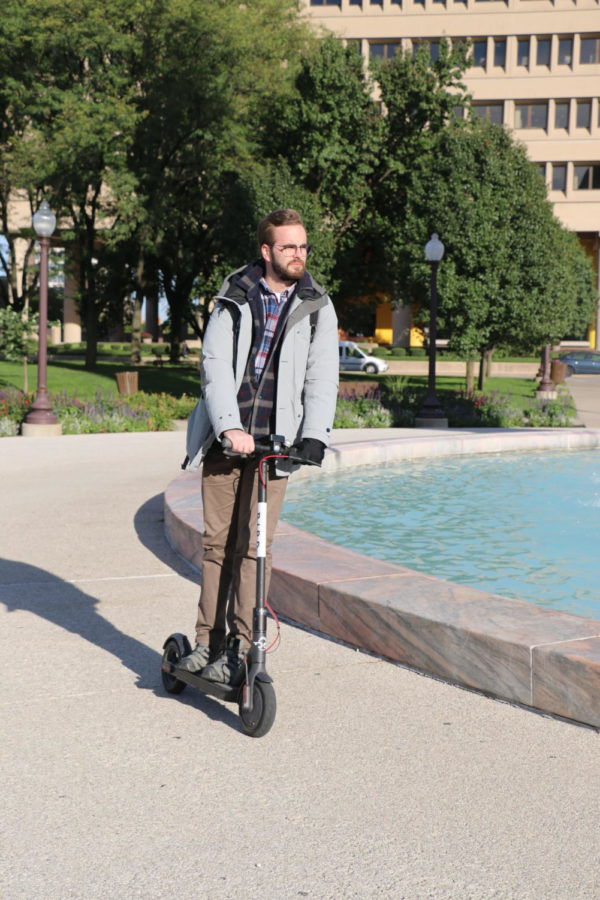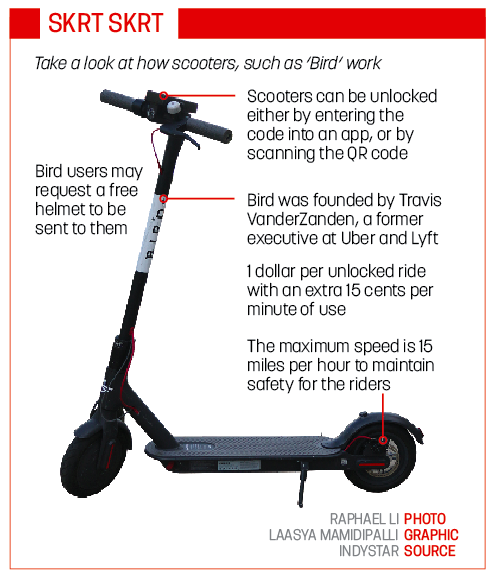
At CHS, many students are encouraged to get involved in their school and community. With hundreds of clubs and organizations offered at school and many more other extracurricular activities outside of school, Carmel offers a wide range of opportunities for students to involve themselves with. However, participating in these activities can often be a struggle for some students who are unable to get to their destination due to limitations in transportation.
Senior Aiza Syed is one of these students. During high school, Syed said she has become more involved in various extracurricular activities, but transportation has often prevented her from participating in these activities. She does not have a car, her parents usually work during the week—making it difficult for them to drive her around—and she has limited access to transportation outside of that. So on most school days, Syed has to either take the bus or late bus, often leaving her unable to partake in any outside-of-school activities.

Indianapolis resident Shane Luttrell rides a Bird schooter through Indanapolis. “It’s no carbon emission, it doesn’t do any kind of damage to the community, so it’s a benefit,” Luttrell said, “Everyone that I see that is driving on these, they’re smiling, you can actually enjoy yourself.”
“I’m really involved with both school extracurriculars and things outside of school, and it’s really hard personally for me to get around,” she said. “As much as I would like to help out—volunteering in Indianapolis or doing stuff for the Carmel Clay Parks and Rec Center—I can’t always do that, and it’s just because I don’t have time but because I don’t have a mode of transportation that can get me there efficiently and that’s cost effective.”
To address issues similar to this for Indianapolis residents, organizations in Indianapolis have recently been working on initiatives to expand reliable access to transportation for their residents. According to the Indianapolis Business Journal, the city planners are increasing access to the IndyGo buses, Bird and Lime scooters, Blue Indy electric-car sharing, Indiana Pacers BikeShare, Uber, Lyft and more. According to the article, the goal with these projects is to make transportation as accessible as possible to the residents.
Comparatively, in Carmel, while most residents use cars as their main form of transportation, David Littlejohn, the alternative transportation coordinator at Carmel’s planning and zoning department, said this city has also been working to expand access to alternative transportation options. In recent years, for example, Littlejohn said he has led initiatives to expand multi-use paths for bikers and pedestrians.
“We do our best to allow people to get around. One of our goals is to not necessarily require people to get people to get into their car to get from one place to another,” Littlejohn said. “I think that was a traditional development for suburbs in the last few decades, and we’ve tried to get away from that a lot earlier than other places, which is why we have such an extensive multi-use path network and we’re working to develop central Carmel to make it even more walkable and bikeable for people to enjoy.”
Senior Will Stergar is one of the students who takes advantage of Carmel’s growing multi-use paths. Stergar said he recently started biking to school and around the community as one of his main forms of transportation. Every morning, he bikes the 3.5-mile trek to CHS. After school, he’ll often bike another five miles to work and then back home. For Stergar, this has been the most convenient option of getting around since he doesn’t have car.

In addition to bikes and personal transportation, Hamilton County offers another less-known option for public transportation known as the Hamilton County Express, a bus available to the county’s residents on weekdays. Elaine McGuire, Hamilton County Express Transportation Manager, said the express is mainly used by people who need to get to work, the elderly and people with disabilities. This transport option, she said, has not only allowed people to get to their jobs and activities, but it has also allowed them better access to health care and other basic needs—as it has contributed to a growing need for more access to transportation in Hamilton County.
With potential projects to expand access to transportation in the works, Littlejohn said he hopes people like Stergar and Syed—who’ve had troubles getting around places in the past—will be able to have more access to transportation so they can get to their various activities.
He said, “The city has a comprehensive plan and as part of that plan, we have… our bicycle and pedestrian plan and it includes where multi-use paths, sidewalks and infrastructure of that nature are planned to go, and so we still have a lot of gaps in our infrastructure where we could connect two different paths to provide full connectivity in a corridor so it is still a work in progress.”































![What happened to theater etiquette? [opinion]](https://hilite.org/wp-content/uploads/2025/04/Entertainment-Perspective-Cover-1200x471.jpg)













































![Review: “The Immortal Soul Salvage Yard:” A criminally underrated poetry collection [MUSE]](https://hilite.org/wp-content/uploads/2025/03/71cju6TvqmL._AC_UF10001000_QL80_.jpg)
![Review: "Dog Man" is Unapologetically Chaotic [MUSE]](https://hilite.org/wp-content/uploads/2025/03/dogman-1200x700.jpg)
![Review: "Ne Zha 2": The WeChat family reunion I didn’t know I needed [MUSE]](https://hilite.org/wp-content/uploads/2025/03/unnamed-4.png)
![Review in Print: Maripaz Villar brings a delightfully unique style to the world of WEBTOON [MUSE]](https://hilite.org/wp-content/uploads/2023/12/maripazcover-1200x960.jpg)
![Review: “The Sword of Kaigen” is a masterpiece [MUSE]](https://hilite.org/wp-content/uploads/2023/11/Screenshot-2023-11-26-201051.png)
![Review: Gateron Oil Kings, great linear switches, okay price [MUSE]](https://hilite.org/wp-content/uploads/2023/11/Screenshot-2023-11-26-200553.png)
![Review: “A Haunting in Venice” is a significant improvement from other Agatha Christie adaptations [MUSE]](https://hilite.org/wp-content/uploads/2023/11/e7ee2938a6d422669771bce6d8088521.jpg)
![Review: A Thanksgiving story from elementary school, still just as interesting [MUSE]](https://hilite.org/wp-content/uploads/2023/11/Screenshot-2023-11-26-195514-987x1200.png)
![Review: "When I Fly Towards You", cute, uplifting youth drama [MUSE]](https://hilite.org/wp-content/uploads/2023/09/When-I-Fly-Towards-You-Chinese-drama.png)
![Postcards from Muse: Hawaii Travel Diary [MUSE]](https://hilite.org/wp-content/uploads/2023/09/My-project-1-1200x1200.jpg)
![Review: "Ladybug & Cat Noir: The Movie," departure from original show [MUSE]](https://hilite.org/wp-content/uploads/2023/09/Ladybug__Cat_Noir_-_The_Movie_poster.jpg)
![Review in Print: "Hidden Love" is the cute, uplifting drama everyone needs [MUSE]](https://hilite.org/wp-content/uploads/2023/09/hiddenlovecover-e1693597208225-1030x1200.png)
![Review in Print: "Heartstopper" is the heartwarming queer romance we all need [MUSE]](https://hilite.org/wp-content/uploads/2023/08/museheartstoppercover-1200x654.png)


